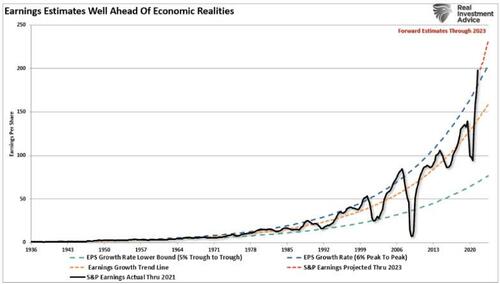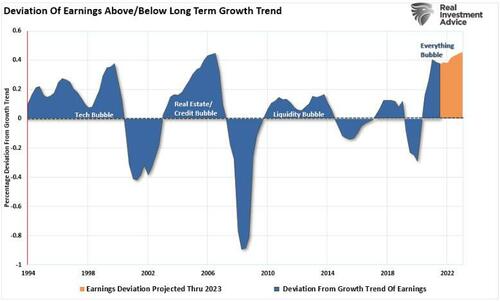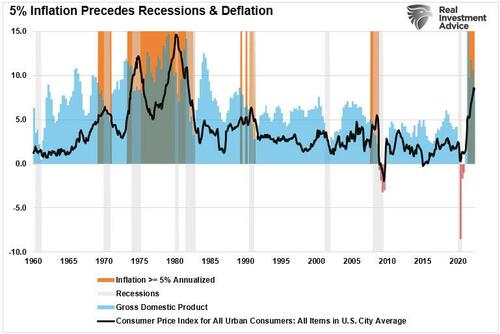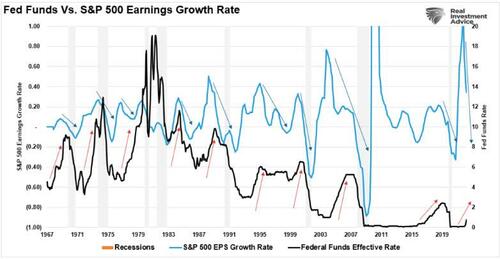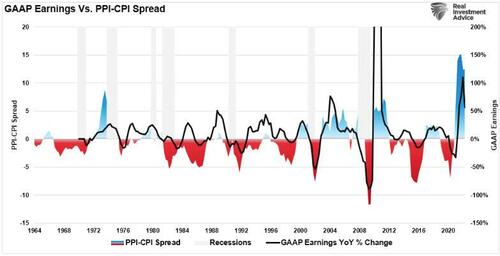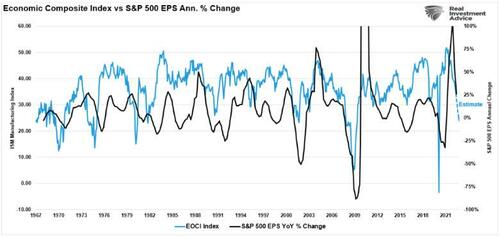From Doe v. Town of Lisbon, decided Thursday by Judge Joseph Laplante (D.N.H.):
Through this lawsuit, the plaintiff—a former police officer for the Town of Lisbon—seeks removal from New Hampshire’s “Exculpatory Evidence Schedule.” Broadly speaking, the EES is “a list of police officers who have engaged in misconduct reflecting negatively on their credibility or trustworthiness.” The New Hampshire Department of Justice maintains the EES and, subject to the provisions of a recently enacted New Hampshire statute … the EES “shall be a public record” under New Hampshire’s right-to-know laws. The NHDOJ publishes the EES on its website.
If an officer files a timely challenge to his or her placement on the EES, however, the officer’s name and corresponding information will be non-public and not subject to disclosure under the right-to-know law until the challenge is complete and all appeals are exhausted. If the officer’s challenge is successful, his or her name and corresponding information will remain non-public. See generally RSA 105:13-d. As a result, on the current EES, officers with pending challenges have their names and corresponding information (such as the reporting police department, date of incident, date of notification, and category of infraction), as well as their case information, redacted. If the officer loses his challenge to placement on the EES, his name and corresponding information are made public. It is unclear from the statute, the parties’ submissions, and other publicly available information whether the NHDOJ maintains an unredacted version of the EES (including the names and information of officers with pending challenges) and if so, who has access to it within the agency.
The plaintiff initially sued the Town in New Hampshire Superior Court, but after the Town timely and properly removed the case to this court, the plaintiff amended his complaint to add the NHDOJ as a defendant. The plaintiff contends that the Town lacked a factual basis to place him on the EES, violated his procedural and substantive due process rights when investigating the underlying conduct that led to his placement on the EES, and, even if the factual findings that led to his placement on the EES were sustained, his alleged behavior was not potentially exculpatory and did not justify placement on the EES.
Following the NHDOJ’s motion to dismiss, the plaintiff’s motion for voluntary dismissal, a potential consolidation order, and oral argument on these preliminary motions and issues, the parties filed a stipulation addressing how they wished to proceed. The court approved the stipulation, effectuating remand of all claims against the NHDOJ and certain claims for injunctive relief against the Town, as well as consolidation with the plaintiff’s related case.
After remand, the following claims for damages against the Town remain before this court: (1) violation of the plaintiff’s procedural due process rights under the United States Constitution and New Hampshire Constitution; (2) violation of his substantive due process rights under both constitutions; and (3) “libel, slander, and damage to reputation” and an award of attorneys’ fees. {The aspects of the procedural and substantive due process claims seeking injunctive relief against the Town and NHDOJ have been remanded to state court by agreement of the parties.}
The parties agreed to allow the plaintiff to proceed pseudonymously, both in state court and in this court. While Grafton County Superior Court Judge MacLeod granted the plaintiff’s motion to seal the docket and all pleadings in the state court matter, the state court record is not sealed on this court’s docket. Nor is this court’s docket or any of the operative pleadings sealed. The only document that is currently sealed is a prior version of a complaint that inadvertently included the plaintiff’s last name on one page….
Because, as noted above, the sealed records in this case are limited to one document, the heart of Professor Volokh’s request is his opposition to pseudonymity. Professor Volokh opposes continued pseudonymous litigation based on the presumption of open court records and his common law and First Amendment rights of access to court records.
The parties appear to have agreed at the state court level to let the plaintiff proceed pseudonymously and continued that agreement once the case was removed to this court. As Professor Volokh correctly points out, however, this court is not bound by state court orders when ruling on a procedural motion governed by federal law, and it may dissolve or modify such state court orders. Accordingly, the state court sealing order does not control here and the court independently analyzes whether the plaintiff should be allowed to continue pseudonymously.
Federal cases must ordinarily proceed in the names of the parties. See Fed. R. Civ. P. 10(a) & 17(a)(1). The Federal Rules of Civil Procedure do not provide a means for proceeding anonymously or through a pseudonym. Nevertheless, while “the public’s right of access to such materials is vibrant, it is not unfettered. Important countervailing interests can, in given instances, overwhelm the usual presumption and defeat access.” To that end, “courts have permitted parties to proceed under a pseudonym and to seal documents that reveal their true identities when extraordinary circumstances justify that restriction.” The court “must carefully balance the competing interests that are at stake in the particular case” when deciding whether to allow pseudonymous litigation and “enjoys considerable leeway in making decisions of this sort.” …
RSA 105:3-d … is not dispositive of the pseudonymity question, but the court also cannot ignore it….
The first factor—the extent to which the plaintiff’s identity has been kept confidential—favors pseudonymity. The plaintiff has maintained anonymity from the outset of this case and his identifying information is redacted on the publicly available version of the EES, as required by RSA 105:13-d. Moreover, nothing in the record suggests that the plaintiff’s identity, as it relates to his presence on the EES, is otherwise publicly known.
The second factor—the bases upon which disclosure is feared or sought to be avoided—also favors pseudonymity. While the “mere fact that judicial records may reveal potentially embarrassing information is not in itself sufficient reason to block public access,” here the plaintiff contends that he will suffer more than embarrassment if his identity is disclosed. Specifically, the plaintiff argues that if he must reveal his identity, he will experience severe reputational damage and impairment of future career prospects, regardless of the outcome of the litigation. The plaintiff’s concerns are well founded.
“[W]here the injury litigated against would be incurred as a result of the disclosure of the plaintiff’s identity,” pseudonymity may be appropriate. If the plaintiff must challenge his placement on the EES in his own name and he ultimately prevails and is removed from the EES, the public will still know that he was placed on the EES initially. The public could suspect, or conclude, that he deserved to be on the list, even if he ultimately proves otherwise. Simply being listed among other dishonest or untrustworthy police officers risks potential, irreversible harms to a person’s career prospects, whether that person wants to work in law enforcement again (as the plaintiff here does) or in other fields of employment. Accordingly, … the plaintiff has a “reasonable fear that, whatever the outcome of the action, public identification will subject him to severe reputational harm … and will defeat the very purpose of this litigation.”
{[And] “the litigant [in this case will likely] sacrifice a potentially valid claim simply to preserve [his] anonymity,” [which] favors pseudonymity. Plaintiff’s counsel indicated at oral argument that his client likely would not prosecute this lawsuit in this court if he must do so in his own name.}
Professor Volokh argues that allowing pseudonymous litigation here would create an exception that could swallow the rule of open litigation because this case resembles a “garden-variety” employment dispute or libel claim. Although Professor Volokh is correct that the plaintiff asserts a libel claim against his former employer and certain aspects of his other claims resemble a dispute between employer and former employee, the plaintiff is not so much challenging his termination as he is his placement on the EES. He also does not seek job reinstatement, back pay, front pay, or other remedies typically associated with employment cases. This litigation (both the federal and state court aspects) derives from RSA 105:13-d, a unique New Hampshire statute establishing a process and remedy for challenging placement on the EES.
Indeed, the plaintiff’s very reason for bringing this suit is to challenge his placement on the EES and ultimately attain removal therefrom. The plaintiff’s status on the EES therefore makes this an atypical case. And while the aspect of the plaintiff’s claims which seek the equitable remedy of removal from the EES have been remanded to state court, the state court case and this case are operating in tandem. Thus, the impact of disclosing the plaintiff’s identity in this case will be felt just as strongly in the state court case and could have the same damaging consequences the statute was enacted to prevent….
[T]he magnitude of the public interest in maintaining the confidentiality of the plaintiff’s identity—similarly favors pseudonymity…. “[I]f this litigant is forced to reveal his or her name, … other similarly situated litigants [will] be deterred from litigating claims that the public would like to have litigated ….” If law enforcement officers know that the statutorily afforded confidentiality can be easily overridden, such that they must litigate cases challenging placement on the EES in their real name, it logically follows that fewer are likely to file such cases and expend resources attempting to clear their names.
In addition, RSA 105:13-d evidences a strong public interest within New Hampshire in maintaining the confidentiality of police officers’ identities during pending legal challenges to placement on the EES. The statute provides that the individual officer’s name and “corresponding information on” the EES shall be published to the public, “except for any individual with a pending legal action regarding the officer’s placement on the” Once the court issues a final order in the case, and the parties exhaust their appellate rights, the officer’s name and corresponding information will become public unless the court finds that “the underlying misconduct is not potentially exculpatory” or “that the law enforcement agency erred in recommending that the officer be placed on the” EES.
The statute also provides that if “the court issues an order finding that an officer did not receive adequate due process and remands the matter back to the law enforcement agency for further due process proceedings, then the officer’s name shall not be publicly disclosed until the due process ordered is finally exhausted.” In other words, if the officer prevails, his identity is never disclosed. Furthermore, the statute provides that nothing therein “shall preclude the court from taking any necessary steps to protect the anonymity of the officer before entry of a final order.” The statute therefore reflects the public’s interest in protecting the anonymity of officers with pending EES challenges, like the plaintiff here. {Indeed, as of April 1, 2022, this lawsuit appears to be the only EES challenge pending in Federal Court and the dozens of other pending challenges in state court are “entirely under seal.”}
To hold otherwise and allow disclosure of the plaintiff’s identity would render many of the statute’s key provisions meaningless. If any interested third party could intervene in an EES challenge and demand disclosure of the affected officer’s name, the anonymity provisions would have no effect and the statute as a whole would be severely weakened. {Without an anonymous challenge procedure, police department leadership may be incentivized to place disgruntled or whistleblowing officers on the EES for inappropriate or even frivolous reasons because of the damaging reputational effects that result from being publicly named on the list.}
Professor Volokh’s interest in learning the plaintiff’s real name so he can, in his words, “effectively” research the plaintiff’s “past cases or controversies” and gain “important context” about the case therefore does not outweigh the strong public interest in preserving at least temporary anonymity reflected in RSA 105:13-d. {Professor Volokh’s effective reporting concerns are somewhat alleviated by the fact that the docket and all of the operative pleadings (which detail the underlying dispute) are publicly available.}
Professor Volokh cites no decisions where a court required disclosure under similar circumstances. The case he considers the closest to this one—Coe v. U.S. Dist. Ct. for Dist. of Colorado (10th Cir. 1982)—is readily distinguishable. There, the plaintiff moved for an injunction requiring the Colorado Board of Medicine to conduct his disciplinary hearing in secret. The court denied the motion. Importantly, Colorado, unlike New Hampshire, had not enacted a directly applicable statutory anonymity provision to protect petitioners. The court observed that “[n]o licensee has a ‘right’ to a secret, closed nonpublic hearing before the Board.” It was instead a “matter within the Board’s statutory authority, subject to its sound discretion in the balancing of public and private interests.” Here, by contrast, the statute requires that those challenging placement on the EES are permitted to remain anonymous during their challenge….
[Moreover, w]hile the court agrees that there is a strong interest in holding public officials like police officers accountable, this is not a suit to hold the plaintiff accountable. The plaintiff has already been held accountable; Lisbon PD terminated him and placed him on the EES. Also, if his challenge fails, he will remain on the EES and the public will learn his identity, resulting in further public accountability. If anything, in an EES challenge, the plaintiff is seeking to hold his former department accountable for potentially placing him on the EES without justification. Contrast that to a § 1983 suit where a citizen seeks to hold a police officer accountable for some unconstitutional conduct. In such a suit, unlike here, the interest in publicly identifying the officer-defendant is especially strong.
The balance of factors thus weighs in favor of allowing the plaintiff to continue proceeding under a pseudonym. The above-described considerations—in particular, the plaintiff’s reasonable concern that he will be subjected to severe reputational damage absent anonymity, regardless of the outcome of this litigation, and the strong public interest (as reflected in RSA 105:13-d) that officers challenging placement on the EES should be allowed to maintain their anonymity during such challenges—outweigh the interests favoring public identification and the presumption of open court proceedings.
This ruling is without prejudice to Professor Volokh, any other party, or the court revisiting the propriety of pseudonymous litigation at a later stage in the litigation. The court’s order is therefore “limited to pretrial proceedings.”
I appreciate the detail and care in the opinion (and appreciate the court’s granting my motion to intervene), but I still disagree, and have filed a notice of appeal. To note just one item, this case is not a challenge under the New Hampshire statute any more: The claims under that statute were remanded to state court. The only claims still proceeding in federal court are allegations that the city violated the state and federal Due Process Clauses, and that it libeled Doe. This makes it, in my view, just like the normal employment case and libel case, and those are litigated in the party’s actual name, even when such litigation would expose allegedly false and damaging accusations against the party (as is common in employment cases and is the norm in libel cases). We’ll see what the First Circuit says.
The post Ex-Police-Officer Allowed to Proceed Pseudonymously with Due Process and Libel Claim Against City appeared first on Reason.com.
from Latest https://ift.tt/AEmb59Z
via IFTTT

